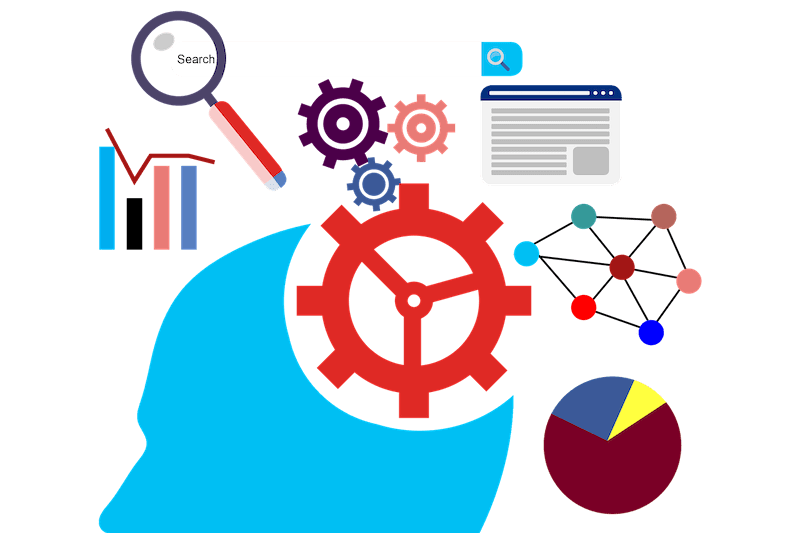6 Digital Marketing Trends for the 2nd Half of 2019
Watch Our Video
Are you looking for new ways to reinvigorate your campaigns in 2019? To do so, it’s important to explore the latest digital marketing trends.
So, what are the key concepts you need to focus on when building your digital marketing campaign?
Voice Search
By the end of 2018, 45 million homes across America had smart home devices. Smart home devices allow users to easily ask direct questions. Thanks to advanced AI software (more on that below) there are fewer mistakes and errors. This makes consumers more likely and willing to rely on this tech in their daily lives.
Instead of searching online, they might ask Alexa or their Google smart home system what the weather will be like. They can also ask questions related to businesses and purchases such as:
‘What is the closet car dealership near me?’
Or
‘How do I fix a broken pipe?’
The last question is important because it provides a company with the chance to offer the answer. If you provide an answer that delivers high-quality content, you might be one of the first results in the SERPs.
However, the main impact here will be on SEO. Companies should leverage long tail keywords and answer these questions on their site rather than using short phrases like ‘used cars Florida.’
Semantic SEO
Semantic SEO is a digital marketing trend dramatically changing how SEO can improve rankings. Originally, search engine optimization was about choosing a particular keyword and then chasing the audience. Typically, a business would also choose a long-tail keyword to dodge higher levels of competition, but things have changed and now search engines are no longer interested in a single keyword. Instead, they are providing results to a topic that your content is linked to.
When building content, you need to consider questions you are trying to answer. This is about providing value, because 80% of the searches are now informational, so your content is more likely to show up to user looking for information on a particular target. That also means that only 10% of searches are transactional, so it is in your best interest to focus in on content that provides information.
This also impacts the content that you should create. Make sure you are providing in-depth, long-form content. Long-form content is more likely to rank over shorter pieces that provide less value to the user.
The focus on semantic SEO also impacts how you should structure your content. It’s important to lie out the questions that the content answers to ensure it can be categorized the right way by a search engine. Using headers will be essential here when building a logical hierarchy. This also ensures that a user understands the content that they are looking at. Content optimized for semantic SEO can take a variety of forms including:
- Lists of resources
- ‘How to’ guides
- Step-by-step instructions
Podcasting & Audio Learning
A few years ago, marketers would have told business owners not to bother with podcasts. It was perceived as a dying trend, but things are quickly changing. 70% of people in the US are familiar with the term podcasting and over 50% have listened to one in their life. By 2020, ad spending through Podcasts is expected to soar to over $500 million. To put this in perspective in 2019 ad spending is only expected to reach $420 million, which highlights tremendous growth.
It’s not just about advertising though, and businesses should consider creating their own podcast for their brand. Podcasts create a high level of engagement and are often automatically downloaded. Once a user subscribes to one, they have opted into the content until they cancel it. Podcasts are also diverse and can be about any topic. Similar to podcasts, audiobooks have become popular today as well.
Artificial Intelligence
Artificial intelligence is growing rapidly. This has paved the way for many fresh options when setting up a digital marketing campaign including chatbots, automation and email personalization.
Chatbots provide a simple and clear way to provide users with information they need or want before they will commit to a purchase. It also ensures that they need not search for information on your site which some users are unwilling to do. This shortens the marketing funnel, leading to a higher level of conversions. By 2020, approximately 85% of customer interactions are expected to be handled with no use of an agent at all. Chatbots are expected to become more advanced by the end of this year and be able to answer more complex questions.
At the same time, automation is also becoming an exciting option in the marketing world. AI is leading to new levels of automation, creating options like real-time bidding. With real-time bidding, it’s possible for a software to bid and on ads efficiently and faster than doing so manually. This once again leads to higher conversions and less spending.
90% of ads expected to be programmatic by 2020.
There’s also the option for email marketing. Email marketing has evolved to create new options for businesses and new experiences for customers. Advances in email marketing mean that you can create personalized experiences for users and create automated email campaigns. When a customer signs up for a mailing list, you can automatically send a personalized email, welcoming them to your business.
You will also have another email that’s sent out to customers that haven’t shopped in a while and those that have recently completed a purchase. By personalizing emails in this way, it’s again possible to increase conversions and potentially avoid missed sales. This occurs because customers feel more connected and valued by your business.
Virtual Reality
Virtual reality is expected to play a major part in digital marketing trends over the next few years with the creation of immersive promotions. There are a few major types of virtual reality including an option that places users in a new world and one that creates a new reality through digital content. Pokemon Go would be an example of the latter and a future where users can bring brick and mortar displays to life on their devices is a real possibility.
By 2022, the VR industry is expected to be worth $33.9 billion.
The number of headsets sold is expected to hit 82 million by 2020, and 71% of consumers think a brand that offers virtual experiences is ‘forward thinking.’ That’s definitely a term you want to be associated with your business – and it can be.
The focus on VR is to create immersive storytelling. By providing a story, you offer something that users and customers of your business can connect with. This is far more effective than simply creating an ad with a virtual technique. Businesses are already creating ads and developing options on their websites that operate and interact using virtual tech that customers have in their home including devices like Google Cardboard.
Visual Search
Finally, you need to think about visual search as a digital marketing trend because it can provide a different experience to your customers and general consumers. Visual search has been around for quite some time, but the use has been limited because of slow load times and unreliable software.
However, faster internet speeds have opened it up as an option for users and it is one they are taking advantage of. In a 2018 survey, over 60% of younger and older shoppers wanted visual search as an option from a brand when shopping online. This was more popular than both augmented reality and chatbots, which we’ve already established are also popular.
Social media networks have already embraced this trend in a big way. For instance, through Pinterest, you can now use Lens. This visual search tool provides users with the option of taking a shot of an item and then searching for where to buy it online, or searching for similar products that the user might be interested in.
There are other options too, such as Google Lens. This search engine allows users to interact with and search items in the real world, including books, business cards, and landmarks. It can save the information or provide more context and details about a place or item.
It doesn’t require a genius level of intellect to realize how this technology can be used by a business to provide more value to customers and clients. This can be used for digital shopping to ensure that customers can easily and quickly locate the items they want.
Related Articles
Manufacturer Marketing Strategies to Consider
June 21, 2019
There’s a common belief amongst manufacturers that they have no need for an online presence. Their customers are all businesses that need someone…
0 Comments8 Minutes
What is B2B Marketing and Where is it Going?
Business Management,Marketing,Digital Marketing
June 14, 2019
What is B2B marketing? For certain companies and business owners, this will be a crucial element of their business model. It’s important to explore…
0 Comments7 Minutes
Why You Should Consider Running Marketing Experiments
Content Marketing,Digital Marketing
June 13, 2019
The world of business changes continually, and this means that business owners and marketers have to respond to new and emerging trends. Marketing…
0 Comments8 Minutes
10 Content Marketing Blogs You Should Check Out
Digital Marketing,Marketing,Content Marketing
June 8, 2019
Nowadays (mostly) everyone is on the internet. Obsessed with their mobile phones, laptops or tablets, users scroll through their social media apps…
0 Comments7 Minutes
Top Omnichannel Marketing Strategies for 2019
Digital Marketing,Content Marketing,Marketing,Social Media
June 6, 2019
Do you understand the modern customer in 2019? Can you see your business through their eyes and from their perspective? In a nutshell, this is what…
0 Comments12 Minutes
Top 25 Best Business Marketing Ideas
Business Management,Marketing,Digital Marketing
June 5, 2019
Struggling to come up with a new marketing strategy that won’t break the bank? Here are 25 of the best business marketing ideas. 1. Send a……
0 Comments9 Minutes
7 Signs it’s Time to Switch Up Your Sales and Marketing Strategy
May 28, 2019
Watch Our Video 50% of small businesses fail after 5 years. Running a business is tough! To survive and stand out from the crowd, you need to use…
0 Comments7 Minutes
7 Hospitality Digital Marketing Trends That Every Hotel Owner Should Know
Digital Marketing,Marketing,Social Media
May 15, 2019
Watch Our Video There are over 700,000 hotels and resorts worldwide. In the United States, 62.2% of all hotels and motels are occupied at any given…
1 Comment8 Minutes
7 Content Marketing Trends For You To Be On Board With In 2019
February 5, 2019
Watch The Video Are you looking to step up your content marketing game in 2019? Last year, content marketing took the digital advertising world by…
0 Comments13 Minutes









